Treblinka Death Camp
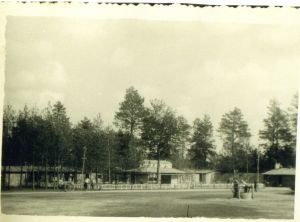
Ukrainian Barracks and Zoo – Lower Camp
The death camp at Treblinka was located in the north-eastern region of the Generalgouvernement. The camp was erected in a sparsely populated area near Malkinia Gora, a junction on the Warsaw – Bialystok railway line, some 4km northwest of the small Treblinka village and its railway station. The site chosen was heavily wooded and well hidden from view, and near an established Arbeitslager (forced labour camp) known as Treblinka l. This camp was for Poles and Jews, located by a gravel pit, one and half kilometres from the site of the death camp. It operated from June 1941 until 23 July 1944.The death camp was established as part of Aktion Reinhardt and construction work began at the beginning of April 1942, after SS men came to the village of Poniatowo, and inspected the locality. The contractors were the German construction firms Schonbronn from Leipzig, and Schmidt und Munstermann, who had an office in Warsaw, at Mars Street.SS- Haupsturmführer Richard Thomalla from the SS-Bauleitung Zamość supervised the construction work. The workers building the death camp were primarily Jews brought there from trucks from neighbouring villages, such as Węgrów and Stoczek Węgrówski, and mostly Polish prisoners from the Treblinka l labour camp. The witness Lucjan Puchala recalled:
Initially we did not know the purpose of building the branch track, and it was only at the end of the job that I found out from the conversation among Germans that the track was to lead to a camp for Jews. The work took two weeks and it was completed on 15th June 1942. Parallel to the construction of the track, earthworks continued.The SS-men and Ukrainians supervising the work killed a few dozen people every day. So that when I looked from the place where I worked to the place where the Jews worked, the field was covered with corpses. The imported workers were used to dig deep ditches and to build various barracks. In particular, I know that a building was built of bricks and concrete, which as I later learned, contained people – to be exterminated.
The camps first commander was the Austrian SS- Obersturmführer Dr Irmfried Eberl who had served in Bernburg and Grafeneck psychiatric institutions and for a short time at the Sobibor death camp. In August 1942 Eberl was relieved of his command by Globocnik, when Globocnik and Wirth visited Treblinka, having been made aware of a chaotic breakdown of the extermination process, because Eberl had accepted more transports than Treblinka could deal with. In late August Eberl was replaced by SS-Hauptsturmführer Franz Stangl, the former commander of the Sobibor death camp, Christian Wirth stayed in Treblinka, to sort out the chaos created by Eberl, and brought several experienced SS-men from Belzec, such as Kurt Franz and Lorenz Hackenholt, to assist in the task.
The camp staff of Treblinka, which was responsible for the smooth operation of the mass-killings, consisted of about 35 –40 Germans, all of whom wore the field-grey uniform of the Waffen-SS. None of them held a rank lower than SS-Unterscharführer. They came either from the Waffen-SS, or from the General SS, but some had previously with the Police, and many had experience of working at various psychiatric institutions. Men like Franz, Kuttner, Miete, Mentz, Hirtreiter, Matthes, were brutal mass murderers. In addition to the Germans, there were about 90 – 120 Ukrainian guards, who mostly assisted in guard duties. As distinct from the Germans these men wore black uniforms, and were armed with carbines, the German camp staff all carried pistols, and sometimes sub-machine guns. Most of the Ukrainian guards were former Soviet prisoners of war, who had volunteered to serve the Germans, and had been trained at the Trawniki camp. Some of them were of German extraction, the so-called Volksdeutsche, and some of these were appointed platoon or squad commanders. Some Ukrainians were used to operate the gas chambers; amongst these were the infamous Ivan Marchenko, and Nikolay Shaleyev.
Between 700- 1000 Jewish inmates performed the manual labour, including the extermination process, and in addition attended to the personal needs of the SS staff. Groups of Jewish specialists were employed on construction work, cutting pine branches in the forest used as camouflage for the barbed wire fences, but most Jewish labour was used in sorting and bundling the clothes, goods and valuables all taken from the murdered Jews. The prisoners were selected for labour from incoming transports, and most were killed within a short time, particularly in the early days of the camps history. In September 1942 Stangl introduced a permanent cadre of Jewish workers, some worked at the ramp receiving the transports, these were known as “Blues”, who wore blue armbands, and the undressing commando, known as the “Reds”, because of their red armbands, and the commando in the Upper Camp – the extermination area.
The camp was laid out in an irregular rectangle 400 metres by 600 metres long surrounded by a barbed wire fence with intertwined tree branches to block any view into the camp from the outside. A second outer fence consisting of barbed wire and anti-tank obstacles called Spanish Horses was also constructed at a later stage. Watchtowers 8 metres high were placed at each four corners of the camp, and additional towers were built in the extermination area. The camp was divided into zones of nearly equal size, the SS and Ukrainian living area, the Auffanglager - the reception area and great sorting barracks, the Wohnlager the Jewish living and working quarters, and the Totenlager, also known as the Upper Camp. A 100m by 100m square was separated from the rest of the camp by a barbed wire fence. It contained three barracks forming a “U” shape. Here the Jewish prisoners who worked in the Lower Camp spent their nights. At the far side of the roll-call area of this section was the latrine covered by a straw roof.
The transports arrived at the reception area in the south west section of the camp. This area included the railway track, the station platform which was 200 metres long, the fake station. At the rail entrance on the spur into the camp was a wooden gate wrapped in barbed wire, intertwined with tree branches. The railway line ended with a wooden buffer, and a wooden gate which was permanently locked. The Lazarett, a small execution site, was also in the reception area. Those too ill or too weak or those who would impede the flow to the gas chambers, such as disabled and unaccompanied children were taken to a fenced in area, with a small wooden building, from which flew a Red Cross flag. After undressing in the waiting room, that had red sofas, they were shot in the neck and thrown into a pit, in which a fire constantly burned. Kapo Kurland was in charge of the Lazarett, and was a leading figure in the revolt. Miete and Mentz were the brutal killers at the Lazarett. Alongside the ramp were two large barracks where the victim’s belongings were sorted and stored. North of these storerooms was the Station Square. East of this section was a fenced-in area called the “Undressing Square” (Entkleidungsplatz). At this place the men were separated from the women and children. Two large barracks were situated here, the northern barrack was utilised by the women to undress and have their cut by barbers who worked behind a partition wall at the end of the barracks, and the southern barrack, used in the early phase of the camps existence for male prisoners sleeping quarters. The latter barrack was later used as a storage depot for goods. Male victims undressed in the open air between the barracks.
The extermination area approximately 200 metres by 250 metres where the mass murders were carried out, was in the south eastern part of the camp. This area was completely isolated from the rest of the camp, by a barbed wire fence camouflaged with tree branches as well as a high earthen mound, all of which prevented observation from the outside. The gas chambers were located inside the extermination area in a long brick building. During the camp’s initial phase there were three gas chambers, each 4 metres by 4 metres, and 2.6 metres high, similar to the first gas chamber constructed at Sobibor. A room attached to the building contained a motor, which introduced the poisonous carbon monoxide gas through pipes into the chambers. The room also contained a generator, which supplied electricity to the entire camp. The entrance doors to the old gas chambers opened onto a wooden corridor at the front of the building. Each of these doors was 1.8m high and 0.9m wide. The doors were hermetically sealed and locked from the outside. Inside the gas chambers, opposite each entrance door, was another door made of thick and strong wooden beams, 2.5 metres wide, and 1.8 metres high. These doors were also hermetically sealed and opened in a manner to modern garage doors, i.e. upwards. They were propped open with wooden beams while the bodies were removed. The walls of the gas chambers were partially covered with white tiles. Showerheads and piping criss-crossed the ceiling, all designed to maintain the illusion of an ordinary shower room. The piping actually served to carry the poison gas into the chambers. The witness Jan Sulkowski, a Polish prisoner from the Treblinka l forced labour camp, helped construct the death camp from 19 May recalled:
SS-men said it was to be a bath. Only later on when the building was almost completed, I realised it was to be a gas chamber. What was indicative of it was a special door of thick steel insulated with rubber, twisted with a bolt and placed in an iron frame and also the fact that in one of the buildingcompartments, there wasput an engine from which 3 iron pipes led through the roof to the 3 remaining parts of the building. A specialist from Berlin came to put tiles inside and he told me that he had already built such chambers elsewhere.
East of the gas chambers and close by them were huge ditches for burying the corpses. A number of these ditches were approximately 50 metres long, 25 metres wide and 10 metres deep. The ditches were dug by an excavator brought from the quarry at the Treblinka 1 forced labour camp. Initially the bodies were brought from the gas chambers to the ditches by trolleys pushed by the Jewish work -brigadeon a narrow – gauge railway. However, this system proved to be impractical and was replaced by the carrying of corpses on stretchers. South east of the gas chambers, were two combined barracks enclosed by a barbed wire fence was erected for the Upper Camp Jewish work-brigade. The barracks included a kitchen, a toilet, and later a laundry. A watchtower and guardroom was built in the centre of the extermination area. The “Undressing Square” in the “Lower Camp” was connected to the extermination area by the Schlauch (The Tube). This pathway 80-90 metres long and approximately 4 metres wide, was enclosed with 2 metres high camouflaged barbed wire fences. The Germans cynically called it the ‘Himmelfahrtstrasse’ – the Road to Heaven”. It commenced behind the women’s undressing barrack and continued east and then south to the gas chambers. The naked Jews were driven along this path to the building containing the gas chambers, by Germans and Ukrainians with whips. The SS living area was in the north western part of the camp comprising of living quarters for the SS, and Ukrainian personnel, who lived in the Max Biala – Kaserne, as well as the Kommandantur, offices, an infirmary, stores and workshops.
At Christmas 1942 Stangl ordered the construction of a fake railway station. A wooden clock with painted numerals permanently indicating 6 o’clock, ticket windows, cashier, station -master and various timetables and arrows indicating train connections To Warsaw -To Bialystok – To Wolkowysk were displayed, and a sign indicating that deportees had arrived at a station called Obermajdan. In early 1943 the SS constructed a zoo and a relaxation area, complete with tables and sunshades, and built a more elaborate main gate, which was near the railroad entrance. The gate consisted of two wooden pillars each decorated with a metal flower, and crowned by a small roof which rested on the pillars, a Polish country style gate. At night floodlights lit the entrance, Ukrainian and SS-men were posted at the main gate and at the guardhouse, which was built in a Tyrolean style, during 1943. At the entrance a sign read ‘SS Sonderkommando Treblinka’.Franz Stangl ordered the construction of a new main street in the Lower Camp, which was named after the SS officer in charge of its construction, the Kurt Seidel Strasse. This was a single –lane street that ran north-south from the main road entrance to the SS Garage. At the end of the street stood an SS garage, where an armoured car was parked. At the back of the garage was painted the sign ‘Guterabfertigung’ which means dispatching of goods, and a door was painted on the back wall as well.
The extermination process explained:
The incoming deportation trains generally consisted of 50-60 cattle wagons containing six to seven thousand people in total. After passing through Malkinia-Gora junction the trains crossed the Bug River, and came to a halt at the Treblinka village station. The station- master was Franciszek Zabecki, a member of the Polish underground, and a key observer of what transpired during 1942 and 1943. He recalled:
Each transport was divided into sections of twenty wagons, and was pushed by a locomotive, driven by Emmerich and Klinzmann, officials of the Reichsbahn / Ostbahn, onto the siding leading to the camp. The remaining wagons waited at the station. As each section of the transport was about to enter the camp, SS and Ukrainian men took up position on the camp’s railway platform and in the reception area. When the wagons stopped the doors were opened one at a time by the “Blue kommando” and the SS men and Ukrainians ordered the Jews to leave the wagons.
Oscar Strawczynski recalled in his book, Ten Months in Treblinka:
We ran out as fast as we can to avoid the whips lashing overhead, and find ourselves on a long narrow platform, crowded to capacity. All familiar faces – neighbours and acquaintances. The dust so tremendous, it obscures the sunlight. A smell of charred flesh stifles the breath. Unwittingly, I catch a glimpse of the mountains of clothing, shoes, bedding and of all kinds of wares that can be seen over the fence. But there is no time to think – the dense mass of people is pushed toward and jammed through a gate. An SS officer then announced to the arrivals, that they had arrived at a transit camp from which they would be sent on to various labour camps, but first they had to take a shower for hygienic reasons, and to have their clothes disinfected. Any money and valuables in their possession were to be handed over for safekeeping and would be returned to them after they had showered. Following this announcement the Jews were ordered to the “Deportation Square.
At the entrance to the “Undressing Square” the men were ordered to the right for undressing, and the women and the children to the left. This was supervised by the “Red Kommando” this had to be done at running pace and was accompanied by shouting and beatings by the guards.After undressing and having their hair cut the naked victims entered the “Tube” that led directly to the gas chambers. Many survivors state that the women and children were gassed first, whilst the naked men tidied up the yard first and then went to their deaths.
Oscar Strawczynski again recounted what happened next:
But there, on that sorrowful Transport Square, there is no time for tears or feelings. I scarcely have time to hand my wife the carefully hidden blanket for the children. A brutal hand grips my shoulder and I am hurled to the other side of the Square. I manage to stay with my gentle father. The place is packed with people. On one side are women with small children, on the opposite side, men, forced to kneel. In the middle there are SS –men, Ukrainians with weapons in their hands, as well as a group of about forty men with red armbands. These are Jews – the detachment of “Reds”. In Treblinka slang they are called “Chevra Kedisha” (Society for Last Rites). Most prominent among all in the Square is a German officer, a stout man with a short beard, mounted on a beautiful brown horse. He moves haughtily on his horse, in the middle of the Square. At a certain point he turns toward the kneeling men and shouts “Craftsmen out”. A number of men step out. Most of them however, are sent back. Only a few are stood aside, where an SS-man makes a further selection, and groups the remaining men in threes. I am kneeling beside my father. My mind is completely blank. No feeling, not a thought. I do not even say a single word to my father.
Once the victims were locked in the gas chambers, the motor was started and the carbon monoxide gas was pumped in. Within 20 –30 minutes, all of the victims were dead. Their bodies were removed from the chambers and taken to the burial or cremation ditches. In the initial phase, a section of twenty wagons containing 2,000 – 3,000 people could be liquidated within 3-4 hours. Later with experience the Germans managed to reduce this time to an hour and a half. Even as the first batch of Jews was being murdered, the railway wagons in which they had been transported in were cleared and cleaned. Some 50 prisoners undertook this task, and the wagons were pulled out of the camp to make room for the next batch of deportees. At this time, another team of approximately 50 prisoners collected the clothes and goods that had been kept in the “Undressing Square” and transferred them to the “Sorting Square.
Here a “Sorting Command” searched the belongings for money or valuables and sorted the clothes. This command was also responsible for removing the Jewish Stars from the clothing, and destroying identity cards and other documents the Germans considered to be of no value. Once sorted, the victim’s possessions were stored, and at the appropriate times were forwarded to the SS warehouses in Lublin. 200 –300 prisoners, the Jewish work-brigade was employed in the extermination area on such tasks as the removal of the corpses from the gas chambers, cleaning the chambers, extraction of the victims gold teeth and burying the bodies. From the winter 1942/43 corpses were cremated by the Jewish work-brigade instead of being buried. As at Belzec and Sobibor death camps, the Germans soon realised that the capacity of the gas chambers needed to be increased, in order to exterminate the volume of Jews still living. Between late August / early September 1942 Wirth and Stangl took the decision to build bigger extermination facilities. In order to obtain the bricks necessary for the construction of the new chambers, the SS scoured the local area. Eventually an old glass factory chimney at Malkinia, was demolished by the camp’s construction expert Erwin Lambert, and the bricks were used to build the new extermination facilities. Bricks were also attached to the deportation trains from the Warsaw Umschlagplatz during August 1942.
The new gas chambers each measured 4m x 8m. The total area covered by the three old chambers was 48 square meters. The new gas chambers encompassed an area of 320 square meters. The new gas chambers were 2 meters in height, about 0.60m lower than the old chambers. This lowering in height reduced the amount of gas required to kill the victims. A central corridor ran along the length of the building, with 5 gas chambers on either side of the corridor. The entrance doors and body removal doors of the gas chambers were of a similar design to the old gas chambers. Alongside the doors in the wall was a small glass panel through which SS- men and Ukrainians could observe the interior of the chambers. The entrance to the Gas Chamber was covered by a Jewish ceremonial curtain, taken from a synagogue, where it had been used as a covering for the Ark (Aron Kodesh). On the curtain there was the Hebrew inscription ‘This is the Gateway to God, Righteous Men will pass through’. The gable over the entrance bore a large Star of David, to reach the opening, one had to climb five wide steps, decorated on either side with potted plants. The new gas chambers could exterminate a maximum of 3,800 people simultaneously; the old gas chambers had a maximum capacity of 600 people. Heinrich Matthes was the chief officer of the Upper Camp assisted by Rum, Potzinger, Munzberger, Horn, Floss and others, including the Ukrainians Marchenko and Shaleyev, who operated the gas chambers. The extermination programme at Treblinka commenced on 23 July 1942 and the first transports came from the Warsaw Ghetto, and by 21 September 1942 some 254,000 Jews from Warsaw and 112,000 Jews from other places in the Warsaw district had been murdered in Treblinka.Among the victims was Janusz Korczak, the noted director of a children’s orphanage in Warsaw and three of Sigmund Freud’s sisters, Marie Freud, Rosa Graf-Freud and Pauline Winternitz who arrived in a transport from Theresienstadt on 23 September 1942.
By the winter of 1942-43 approximately 337,000 Jews from the Radom district had been killed, as well as 35,000 from the Lublin district. In total an estimated 738,000 Jews from the Generalgouvernement and more than 107,000 from the Bialystok district were slaughtered between July 1942 and April 1943. Jews from outside Poland were also murdered at Treblinka, 7,000 Jews from Slovakia, were murdered in the summer and autumn of 1942.Between the 19 September and 22 October 1942 ten transports brought approximately 18,000 Jews from Theresienstadt (Terezín). From Greece over 4,000 Jews, who had first been deported from their homes in Thrace to Bulgaria, arrived at Treblinka in the latter half of March 1943. 7,000 Macedonian Jews were murdered between March 1943 and April 1943. At least one transport of 2,800 Jews was dispatched from Salonika at the end of March 1943. Also 2,000 Romany Gypsies were also murdered in Treblinka death camp. The extermination programmed continued until April 1943, after which time only a few isolated transports arrived, including the survivors of the Warsaw Ghetto uprising, the main task that faced the SS was the elimination of the crime.
Following a visit of Reichsführer-SS Heinrich Himmler in early March 1943, the order was issued to cremate the bodies. The mass graves were opened and the corpses were exhumed and burned on huge cremation grids, constructed from railway tracks, under the guidance of SS- Scharführer Floss. During spring 1943, a savage typhus epidemic ravaged the Jewish prisoners. Hundreds of them were given an injection, then executed at the Lazarett by August Miete, and Willi Mentz.
Several individual attempts to escape and resist occurred, for example the killing of SS-man Max Biala by Meir Berliner on 11 September 1942, and Dr Julian Chorazycki, one of the leaders of the planned revolt, who was discovered by Kurt Franz to be in possession of a large sum of money, who attacked Franz, but took poison to avoid betraying the revolt. With the cremation of the bodies nearing completion, a resistance group including Lageraltester Engineer Galewski, Dr Julian Chorazycki, Zelo Bloch, Zvi Kurland and Dr Leichert, was formed and plans for a revolt were formalised, and dates for an uprising agreed and then postponed. When it was clear that the uprising could not be postponed any longer, the revolt was fixed to take place on 2 August 1943, at 5pm. Weapons were removed by the resistance from the SS-Armoury, and distributed, and SS-men Franz and Reuter and 16 Ukrainians went for a swim in the nearby Bug River, thereby depleting the SS garrison. When Fritz Kuttner in charge of the Lower Camp started beating a prisoner, the Resistance Leaders had no option to fire a shot and start the revolt early, as they were afraid the prisoner would reveal all about the plot to revolt. The rebels possessing stolen weapons started the revolt at two minutes to four opened fire on the camp guards. The petrol station exploded in a mass of flames thanks to Standa Lichtblau, who worked in the garage. Wooden barracks and fences were set ablaze, although the gas chambers were not damaged, and the prisoners now tried to escape from the camp.The prisoners were fired at by the guards in the watchtowers, and many died, entangled on the barbed wire, that was strung across the anti-tank obstacles. Most if not all of the revolt leaders did not survive the escape from the camp, Galewski did taste freedom, but did not survive the brutal aftermath of the escape. The inmates who did escape were pursued by the local police and security forces, including guards from the forced labour camp at Treblinka 1. Also railway guards, Ukrainians on horseback and members of the Gendarmarie, joined in the pursuit, the fire – brigade from Malkinia arrived to put out the burning fires in the camp itself. 1,000 Jewish prisoners were alive when the revolt took place, approximately 200 managed to break out, and only 60 of these were alive at the end of the war to tell the world about the horrors of Treblinka. Of the prisoners who remained in the camp after the uprising, some were killed on the spot, whilst the rest were forced to demolish the remaining structures and obliterate all traces of the camps murderous activities.
Since the gas chambers had not been destroyed in the revolt, they continued to function and the last victims were gassed on 21 August 1943 from Bialystok. When this final gassing was completed, the camp area was ploughed over and trees were planted. The camp was turned into a farm, and a Ukrainian guard called Streibel, was settled there with his family, in order to protect the site from being plundered by the local population. After he left the site in 1944 the local population descended on the former camp site looking for gold and other valuables. Whilst doing this they discovered parts of decomposed bodies.The remaining Jewish prisoners were either shot or transferred to the Sobibor death camp on 20 October 1943, via Siedlce and Chelm.On 17 November 1943 the last transport departed carrying equipment from the camp, parts of the barracks had already been sent to Dorohucza Labour camp on 4 November 1943. It is estimated that a minimum of between 700,000 and 900,000 Jews lost their lives in the Treblinka death camp, between July 1942 and August 1943.
Treblinka in Photographs

Bakery, Zoo and Stables
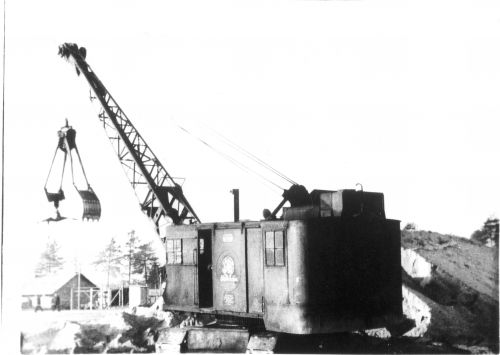
Excavator in the Totenlager - Old Gas Chamber building in the background
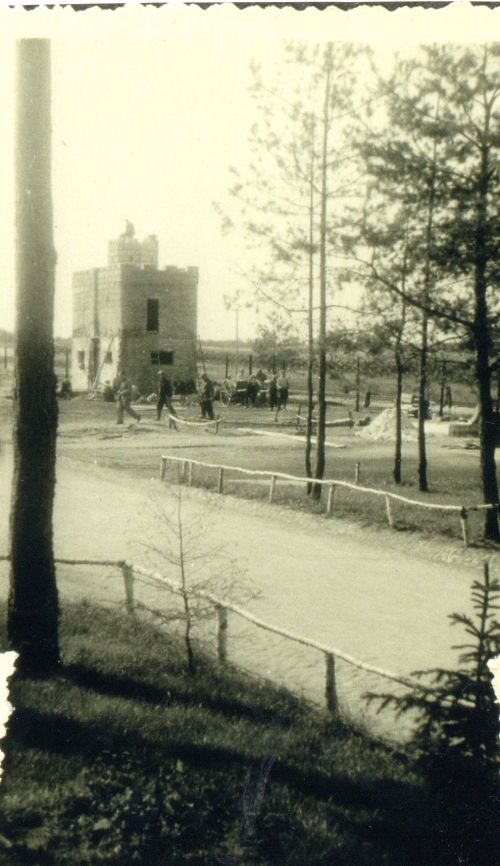
The Armoury after the revolt - Kurt Seidel Strasse

Franz Stangl in white jacket and Kurt Franz
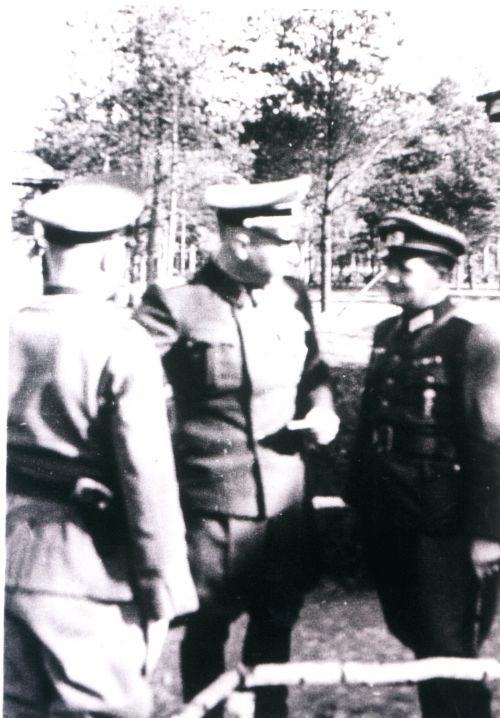
Franz Stangl and visitor
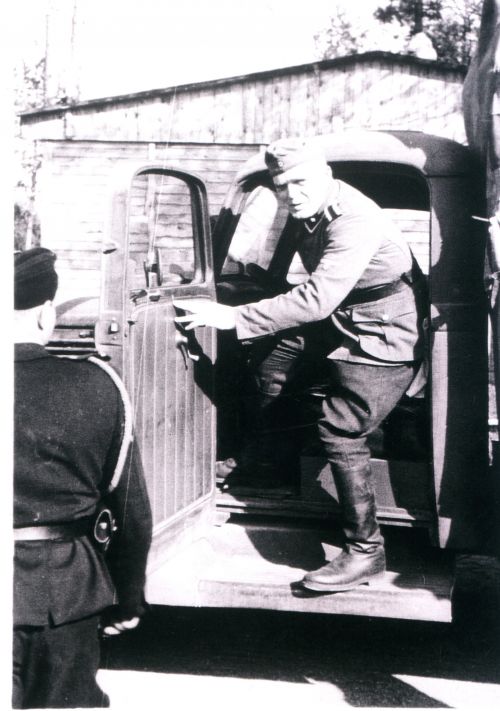
Fritz Schmidt and unknown Trawnikimanner
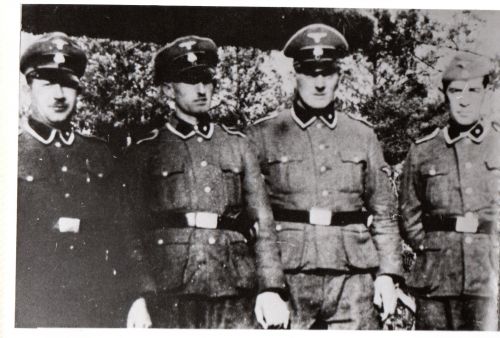
Bredow, Mentz, Molller and Hirtreiter in Treblinka
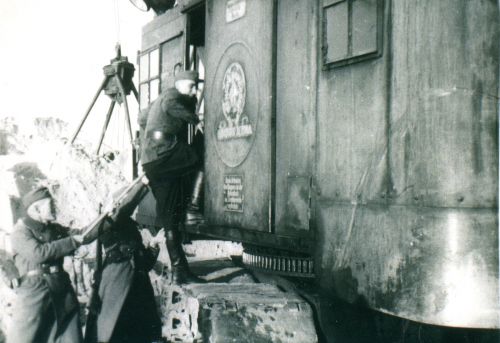
Excavator in the Totenlager with German personnel

Adolf Gentz exercising on Kurt Seidel Strasse

Barry outside the German quarters
Excavators in the Totenlager
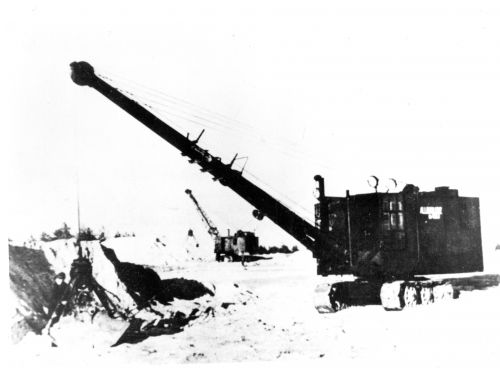
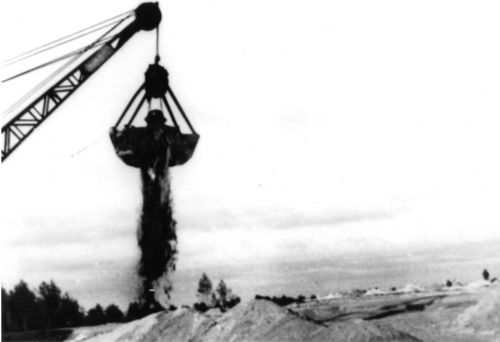

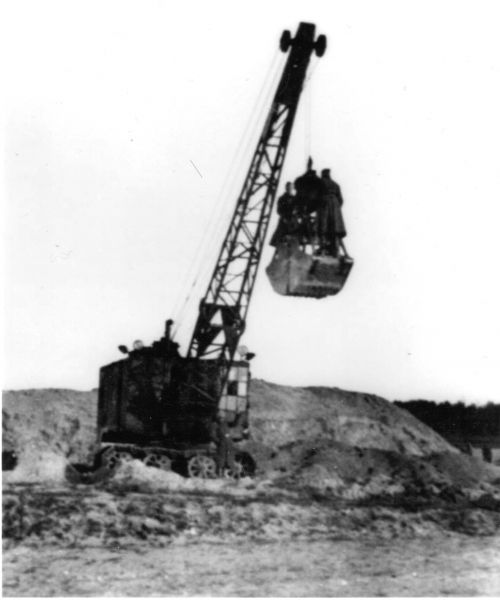
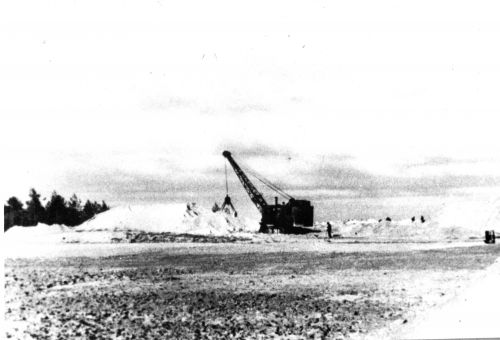
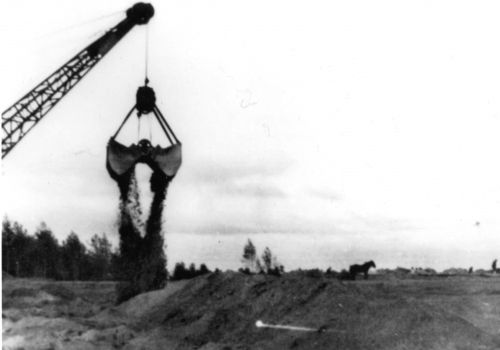
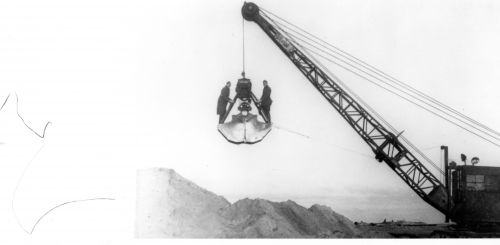

Treblinka Zoo at the left and Ukrainian Barracks
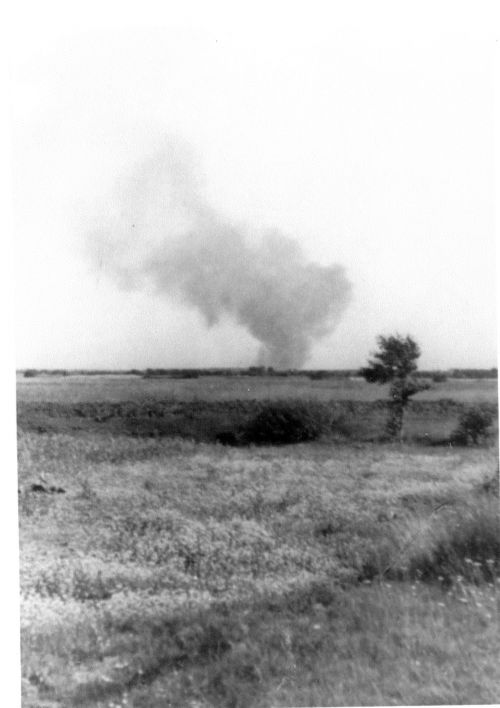
Treblinka ablaze - Revolt August 2, 1943. Photograph taken by Zygmunt Zabecki
All photographs from the Chris Webb Archive
Sources
Encyclopaedia of The Holocaust
Y. Arad, Belzec, Sobibor, Treblinka – The Aktion Reinhard Death Camps, Indiana University Press, Bloomington and Indianapolis 1987
W. Chrostowski, Extermination Camp Treblinka, Vallentine Mitchell, London 2004
A.Donat, The Death Camp Treblinka, Holocaust Library, New York 1979
Richard Glazar, Trap with a Green Fence, Northwestern University Press, Evanston, Illinois 1995
R. Hilberg, Sonderzuge nach Auschwitz, Dumjahn, Mainz 1981
J. Kermish, Selected Documents from the Warsaw Ghetto Underground, Yad Vashem, Jerusalem 1986
G. Sereny, Into That Darkness, Pimlico, London 1974
Oscar Strawczynski, Escaping Hell in Treblinka, Yad Vashem, Jerusalem 2007
Samuel Willenberg, Surviving Treblinka, Basil Blackwell, Oxford 1989
National Archives Kew HW16/32
Thanks to Victor Smart
Photographs – Kurt Franz Album, Chris Webb Private Archive
Dedicated to Kalman Teigman
© Holocaust Historical Society 2019





















